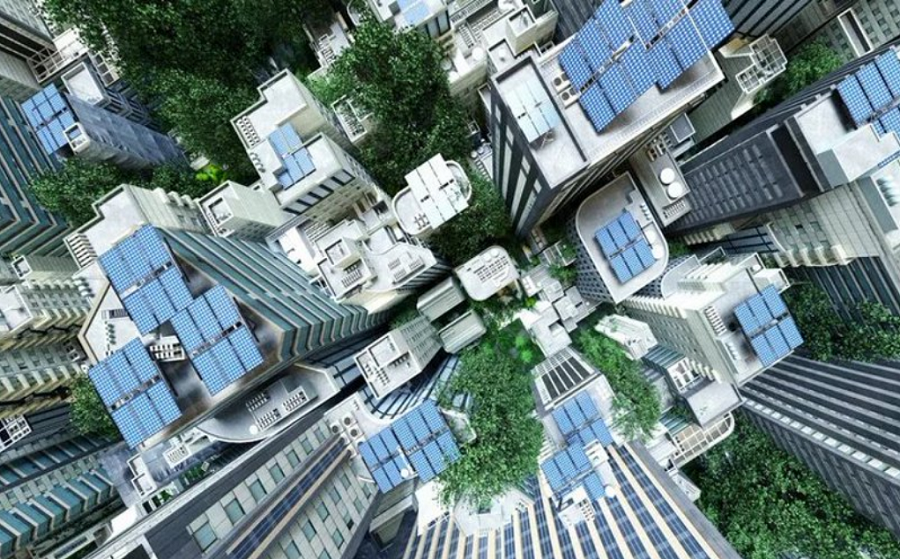On World Environment Day, the World Green Building Council (WorldGBC) announces its 14th annual World Green Building Week, taking place 11–15 September 2023.
As the largest contributing sector to global energy-related carbon emissions (37% globally), the built environment is a key agent of change to deliver on the systemic transition needed to meet the goals of the Paris Agreement.
This World Green Building Week — #BuildingTheTransition — calls on the global building and construction sector to accelerate the transition to secure an energy efficient, regenerative and just future for all.
Led by a network of over 75 national Green Building Councils (GBCs) and their 46,000 members, the week-long event will show how through systems change thinking, and leveraging local solutions, we can transition to sustainable built environments.

This year, all eyes are on the world’s first Global Stocktake, expected to show the status of our efforts in implementing the Paris Agreement. Political and private sector leaders across the world are asking “how far have we come?”, and importantly, “how far do we still have to go?” in order to tackle the worst impacts of global warming, humanitarian challenges and economic uncertainties.
There is no question that the world must undergo a transition to ensure better outcomes for nature and people. But this transition won't happen on its own. It requires systemic transformation across all sectors, including buildings and construction. An urgent understanding of what the transition entails, and a profound shift in how all stakeholders think and act on any given choice is imperative to secure an equitable and just future for all.
Throughout World Green Building Week, WorldGBC’s network will host events across the world and share examples of #BuildingTheTransition across three themes: the energy transition, regenerative transition and just transition. This year’s campaign will also lead into the UN’s 2023 SDG Summit (18–19 September) and therefore pinpoint 11 of the 17 Sustainable Development Goals that are essential to catalyse a sustainable built environment.
#BuildingTheTransition’s three themes highlight how the built environment can support the Paris Agreement and the UN’s Sustainable Development Goals:
The Energy Transition
The energy transition is about more than switching to renewable energy. We’re talking about a complete systemic change. Accelerating the uptake of built environments that reduce energy demand, store and share clean energy, and produce more energy than they use. It’s investing in clean technologies and driving economies of scale. And it’s deep retrofitting existing buildings to be exceptionally energy efficient.
The Regenerative Transition
How do we advance regenerative principles in the built environment from niche to normal? Our planet’s resources give us life, but they are not infinite. Humans and the built environment must exist together within a cycle of natural systems. That means not just protecting biodiversity but prioritising its restoration, embracing nature-based solutions, and creating a thriving circular economy across the entire building value chain.
The Just Transition
We cannot achieve climate justice without social justice. The people who have contributed the least to environmental degradation are suffering the biggest consequences. Equality is not the same as equity. Advancing a just transition in the built environment means committed solidarity to protect human rights from financial flows, to supply chains, to geopolitics.
Cristina Gamboa, CEO, World Green Building Council: “A final reminder. That’s what we have from this year’s Sixth Assessment Report from the Intergovernmental Panel on Climate Change (IPCC). A final reminder before we are evicted by an uninhabitable planet.
“In the run up to COP28 in Dubai, UAE, and in the world’s first Global Stocktake year, we must remember that 1.5ºC is a limit, not a target. Our aim cannot be to only avoid the worst-case scenario when we are capable of so much more. The building and construction sector has the ability to mobilise and scale available solutions now to deliver a future that is energy efficient, regenerative and just.
“Scaling these solutions requires political will and industry ambition. As the largest contributing sector to carbon emissions, the built environment is at a historical juncture to deliver on the required transitions in a decisive decade.
“That’s why this World Green Building Week our #BuildingTheTransition campaign is leveraging localised solutions from the built environment to accelerate a global transition to a decarbonised, sustainable and resilient society. Between 11–15 September, we’re inviting our global community to take urgent action to accelerate the UN Sustainable Development Goals and transition to energy efficient, regenerative and just built environments for everyone, everywhere.”




















